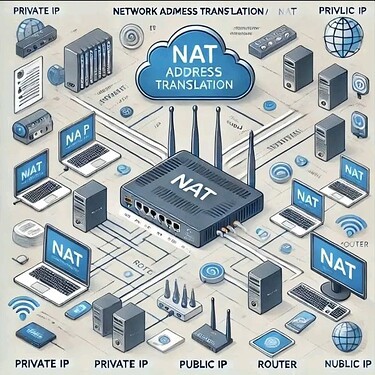The magic that lets you browse the internet without needing a real IP address for each device!
Imagine: You have a router at home, and all your devices are connected to it, but your service provider has only given you one IP address! How can all these devices connect to the internet?
This is where NAT (Network Address Translation) comes in. It acts as an intermediary between your private network and the internet. Simply put, when your device sends a request to a website, the router replaces its private IP with a public IP and stores the request. When the response arrives, it forwards it to the correct device.
But is there only one type of NAT? No, there are three main types:
![]() Static NAT –
Static NAT –
Associates a specific private IP with a fixed public IP. It’s rarely used, but useful for servers that need direct access from the internet.
![]() Dynamic NAT –
Dynamic NAT –
Assigns a public IP to any device requesting a connection, but from a pool of available IPs.
![]() PAT (Port Address Translation) –
PAT (Port Address Translation) –
And here’s the real magic! Allows hundreds of devices to use the same public IP by manipulating port numbers. This is what makes your home internet work seamlessly!
Happy learning!

 !
!